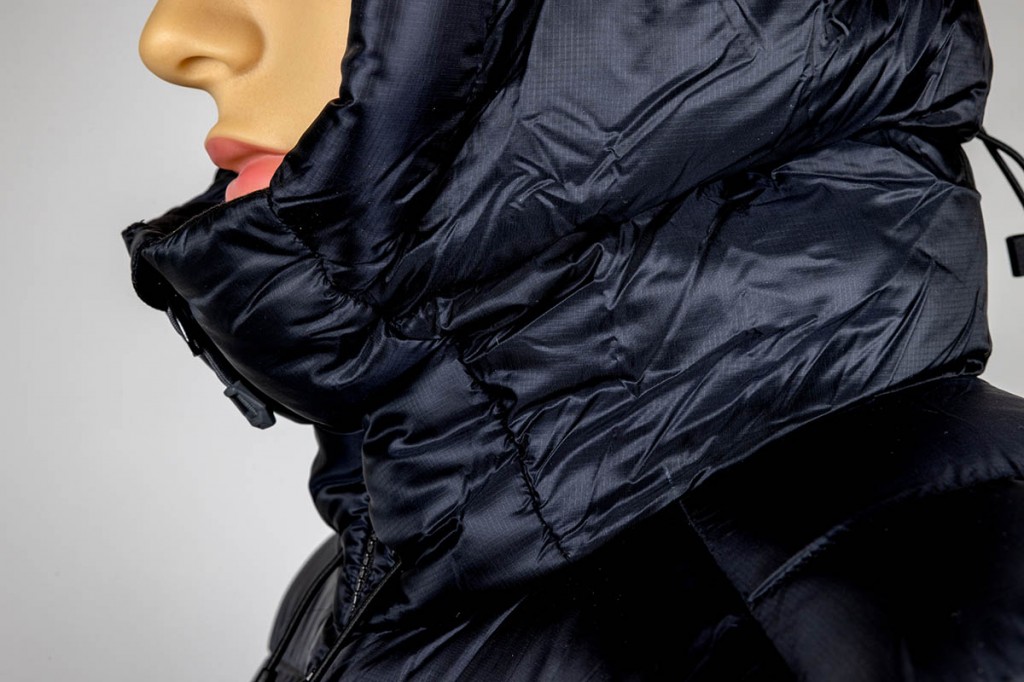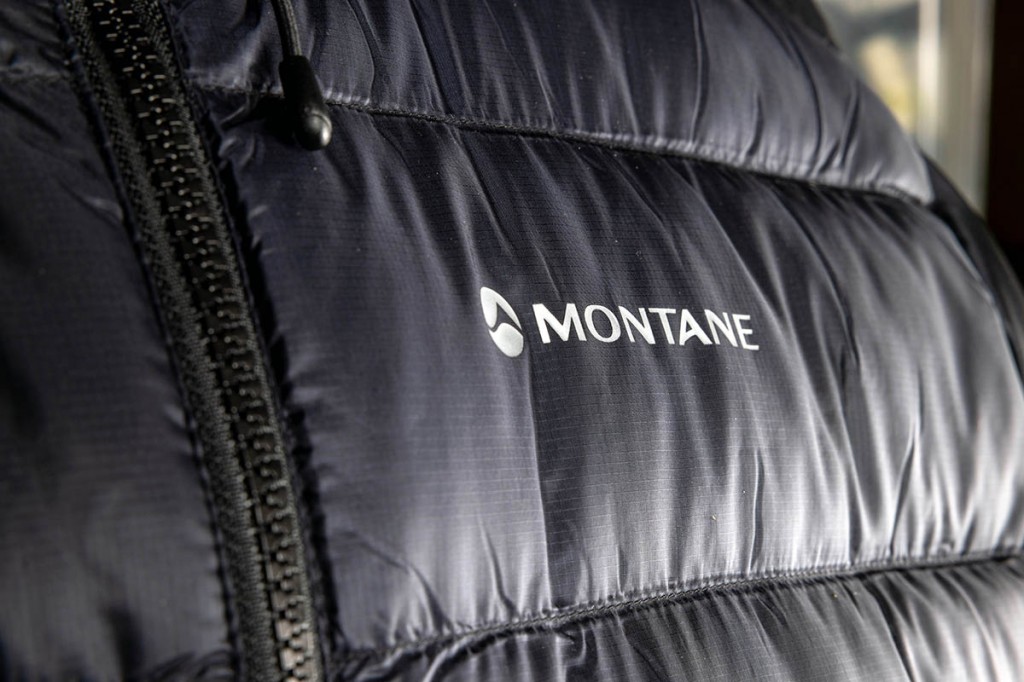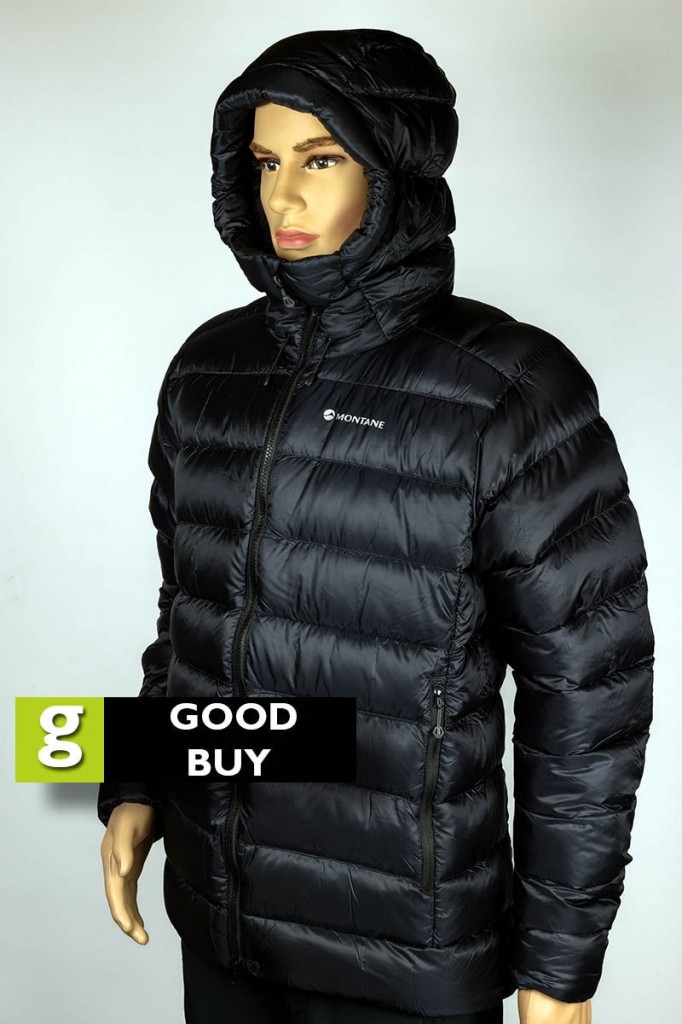Price: £280
Weight: 494g (men’s medium, including stuffsack)
Insulation: water-resistant duck down
Shell fabric: Pertex Quantum Eco
Country of manufacture: Cambodia
Women’s version: yes
Sizes: men’s S-XXL; women’s 8-16
There was a time when, if you needed the warmth provided by an insulated jacket, your choice was pretty much limited to one filled with down.
But over the past few years, advances in synthetic fillings mean it’s less clear-cut. Some synthetic fillings offer a good amount of warmth, along with the advantage of not being as susceptible to loss of performance when wet.
So is there a place for the down jacket in your kit? I took to the hills in Montane’s Anti-Freeze XT Hoodie to evaluate how well the brand’s down jacket compares.
The first thing to point out is that the XT version of the Anti-Freeze comes with a pretty hefty price tag. The jacket contained 210g of 750+ fill-power duck down. Fill power is an indication of the quality of the down and its ability to maintain ‘loft’ or fluffiness, and resist compression. A 750 fill-power garment should provide good insulation and, with the quantity of down used in the Montane jacket, did keep me warm on some very cold days. As a contrast, the non XT Anti-Freeze from the brand has 140g of the same quality of down.
The down is Allied’s HyperDry water-resistant, treated using fluorocarbon-free chemicals, to allow better performance when damp. The big drawback of natural fillings in insulated jackets was the fact that, when wet, the loft of the down collapsed and with it the ability to trap air to keep you warm. While hydrophobic treatments won’t completely cure this, the Montane jacket did continue to provide good performance on a couple of occasions when I was caught out by snow and sleet showers. The shell fabric, Pertex Quantum Eco, also has PFC-free durable water-resistant treatment, which kept out most of the wet.
But I should stress this isn’t a waterproof jacket and isn’t designed to be. I planned my walks in the Anti-Freeze on days when the forecast was for cold, dry conditions (forecasts aren’t always 100 per cent accurate), and that’s when I’d recommend using this jacket.
The fabric blocked wind well too, adding to the ability to keep me warm. The Pertex material has a subtle ripstop pattern and is soft to the touch, while being robust enough to stand up to my regular excursions onto the hills and mountains. The quilting baffles keeping the down in place are medium width throughout and there was virtually no settling of the down filling within them.
The sleeve cuffs have light elastication and the jacket’s hem has shockcord adjustment with twin spring toggles. The main zip is backed by a storm flap which kept out the wind, and there’s a press-stud fastener at the bottom of the zip, and soft tricot chin guard lining at the top.
The two handwarmer pockets are zipped and the right one contains a tethered stuff sack. When packed into the sack, the jacket measured 23cm x 14cm. There’s also a zipped pocket inside the jacket, big enough for a smartphone.
The hood proved very useful on cold, windy days on the mountain. It has full down filling and is adjustable at the rear by a halo cord with spring toggle lock, and at the front by twin cords with hidden spring button locks. These enabled me to cinch in the hood snug round my face in headwinds and keep the hood in place.
The Montane Anti-Freeze XT Hoodie was my jacket of choice for dry days when the temperature hovered around zero. It was particularly good when wind speed picked up, keeping out the driven cold, and resisted short periods of wintry showers, along with some perspiration dampening the lining.
I also found it useful for keeping warm at camp as the temperature plunged, and first thing in the morning when emerging into a frost-covered world.
It scored over a synthetic insulated jacket in being lighter, more packable and considerably warmer but, at a price £100 steeper than Montane’s PrimaLoft-filled Icarus, the latter of which is still my standard warm garment for hillwalking on typical damp days.
The fit is described as ‘mountain’, that’s to say it will enable layers to be worn beneath it. That said, it was pretty snug on me, while not being constrictive when moving over technical terrain.
On sustainability, the Montane insulated jacket scored quite well. The outer shell uses 100 per cent recycled nylon and its durable water-resistant treatment is PFC-free. The water-resistant treatment of the down insulation is also fluorocarbon-free. The down itself is Responsible Down Standard and Track My Down certified. The process of treating the down uses less water and chemicals than conventional methods. It’s not suitable for vegans as it’s of animal origin.
Montane offers a repair service for damaged garments, to extend their life rather than owners disposing of them. The company is a member of the European Outdoor Conservation Association, supporting environmental projects internationally. It also donates its Black Friday equivalent amounts to the Fix the Fells scheme in the Lake District. It has donated more than £25,000 to the British Mountaineering Council-Moors for the Future Climate Project.
It organises lunchtime litter picks for its Northumberland staff and encourages them to cycle to its base, providing a bike shelter, showers and lockers. It has switched to recyclable LDPE plastic for its polythene bags and removed polybags from direct-to-customer deliveries.
The Montane Anti-Freeze XT Hoodie performed well and provided good insulation on the coldest days of the winter and indeed beyond into early spring when temperatures remained well below average. I was quick to dig the jacket out of my pack at camp to ensure I kept warm, and the hoodie blocked out some pretty fierce winds on the mountain. It’s not a garment for rainy, wet days, but it did maintain its performance in a couple of wintry showers.
Best uses: mountain walking and hillwalking in cold, dry conditions; mountaineering; winter camping.
Warmth 37/40
Packability 15/20
Windblocking 8/10
Quality 7/10
Value for money 6/10
Sustainability 8/10
Total score: 81/100


